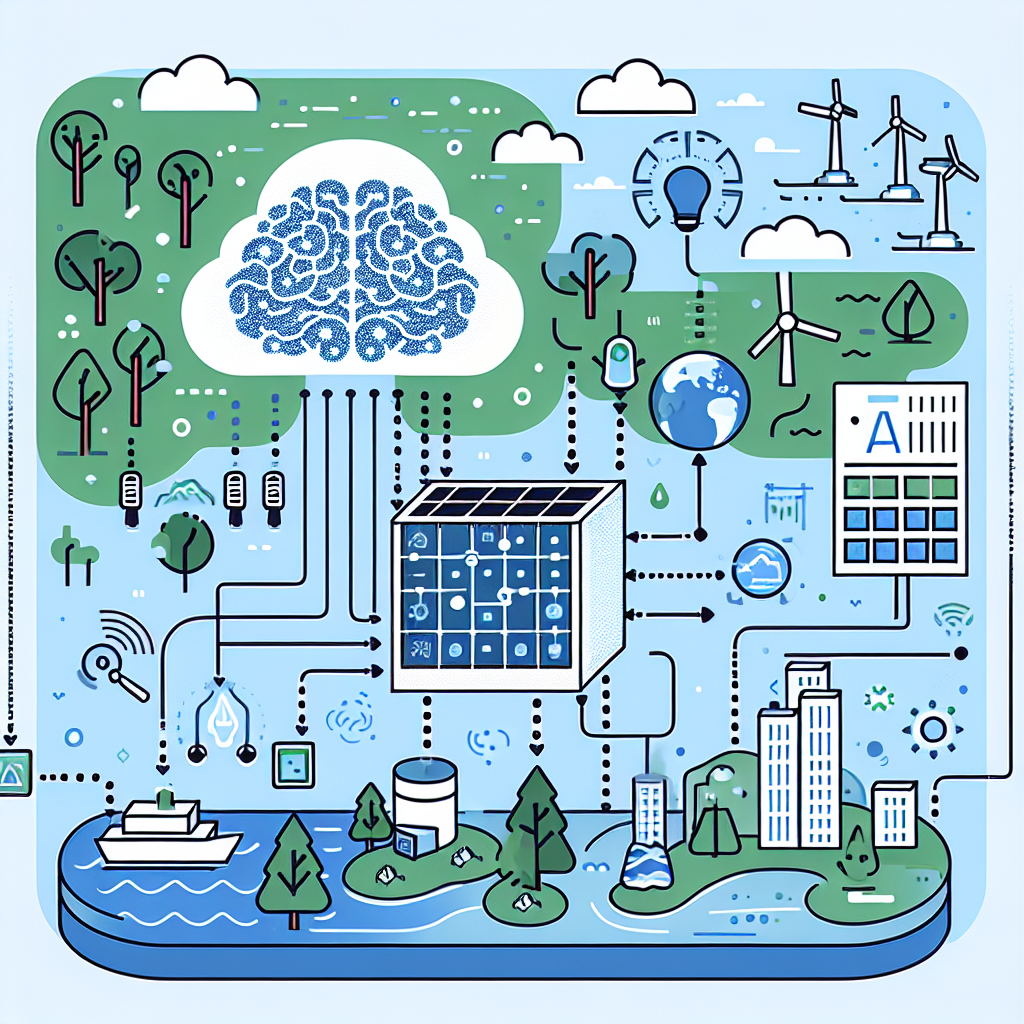With the increasing concern for environmental issues, the need for effective monitoring and management of natural resources has become more critical than ever. Artificial intelligence (AI) has emerged as a powerful tool that can revolutionize environmental monitoring practices by providing real-time data, predictive analytics, and automated decision-making capabilities. In this guide, we will explore the benefits of implementing AI platforms in environmental monitoring and provide a step-by-step approach to help organizations leverage this technology effectively.
Benefits of AI Platforms in Environmental Monitoring
1. Real-time Data Analysis: AI platforms can process vast amounts of data in real-time, allowing organizations to monitor environmental conditions and detect anomalies promptly. This capability enables early intervention and helps prevent environmental disasters.
2. Predictive Analytics: AI algorithms can analyze historical data to predict future environmental trends and identify potential risks. By leveraging predictive analytics, organizations can optimize resource allocation and develop proactive strategies to mitigate environmental impacts.
3. Automated Decision-making: AI platforms can automate routine monitoring tasks and decision-making processes, freeing up human resources to focus on more complex environmental challenges. This automation improves operational efficiency and reduces the likelihood of human error.
4. Enhanced Monitoring Capabilities: AI technologies, such as drones and remote sensors, can collect data from remote or hazardous environments that are difficult for humans to access. This enhanced monitoring capability enables organizations to track environmental changes in real-time and make informed decisions based on accurate data.
5. Cost Savings: By streamlining monitoring processes and optimizing resource allocation, AI platforms can help organizations reduce operational costs and improve overall efficiency. This cost savings can be redirected towards implementing sustainable practices and investing in long-term environmental conservation efforts.
6. Improved Data Accuracy: AI algorithms can process and analyze data with a high level of accuracy, minimizing the risk of errors and ensuring the reliability of monitoring results. This improved data accuracy enhances the credibility of environmental monitoring efforts and facilitates evidence-based decision-making.
Step-by-Step Guide to Implementing AI Platforms in Environmental Monitoring
1. Define Objectives and Scope: The first step in implementing AI platforms in environmental monitoring is to clearly define the objectives and scope of the project. Identify the environmental parameters to be monitored, the desired outcomes, and the key performance indicators that will measure the success of the initiative.
2. Select Appropriate AI Technologies: Choose AI technologies that align with the objectives of the project and the environmental parameters to be monitored. Consider factors such as data volume, processing speed, and compatibility with existing monitoring systems when selecting AI platforms.
3. Collect and Prepare Data: Gather historical and real-time data from various sources, such as sensors, satellites, and IoT devices, to train AI algorithms. Clean and preprocess the data to ensure its quality and compatibility with AI models.
4. Develop AI Models: Use machine learning algorithms, such as neural networks and decision trees, to develop predictive models that can analyze environmental data and detect anomalies. Train the AI models using labeled data and validate their performance through testing and validation processes.
5. Integrate AI Platforms with Monitoring Systems: Integrate AI platforms with existing monitoring systems to enable data exchange and communication between different components. Ensure seamless integration to facilitate real-time data processing and decision-making.
6. Monitor and Evaluate Performance: Continuously monitor the performance of AI platforms in environmental monitoring and evaluate their effectiveness in achieving the project objectives. Identify areas for improvement and adjust the AI models accordingly to enhance their predictive capabilities.
7. Implement Adaptive Management Strategies: Implement adaptive management strategies that allow for flexibility and responsiveness to changing environmental conditions. Use AI platforms to monitor trends, predict future risks, and adjust management practices in real-time to mitigate environmental impacts.
8. Collaborate with Stakeholders: Engage with stakeholders, such as government agencies, NGOs, and local communities, to foster collaboration and ensure the success of the AI platform implementation. Seek feedback and input from stakeholders to enhance the relevance and effectiveness of environmental monitoring efforts.
9. Scale Up and Expand: Once the AI platform has proven its value in environmental monitoring, consider scaling up the initiative and expanding its reach to cover larger geographical areas or additional environmental parameters. Seek funding and support from stakeholders to sustain and grow the project over time.
Frequently Asked Questions (FAQs)
Q: What are the potential challenges of implementing AI platforms in environmental monitoring?
A: Some of the challenges of implementing AI platforms in environmental monitoring include data privacy concerns, technical complexity, and the need for specialized expertise. Organizations may also face resistance from stakeholders who are unfamiliar with AI technologies or skeptical of their benefits.
Q: How can organizations ensure the ethical use of AI in environmental monitoring?
A: Organizations can ensure the ethical use of AI in environmental monitoring by establishing clear guidelines and policies for data collection, processing, and decision-making. They should prioritize transparency, accountability, and fairness in their AI initiatives to build trust with stakeholders and promote ethical practices.
Q: What are the key considerations for selecting AI technologies for environmental monitoring?
A: When selecting AI technologies for environmental monitoring, organizations should consider factors such as data volume, processing speed, scalability, and compatibility with existing systems. They should also assess the reliability, accuracy, and interpretability of AI models to ensure their effectiveness in monitoring environmental parameters.
Q: How can AI platforms help address climate change and other environmental challenges?
A: AI platforms can help address climate change and other environmental challenges by providing real-time data analysis, predictive analytics, and automated decision-making capabilities. They enable organizations to monitor environmental conditions, identify risks, and take proactive measures to mitigate impacts and promote sustainability.
In conclusion, implementing AI platforms in environmental monitoring offers significant benefits, such as real-time data analysis, predictive analytics, and automated decision-making capabilities. By following a step-by-step approach and considering key factors, organizations can leverage AI technologies effectively to enhance their monitoring practices and promote environmental conservation. With the right strategies and collaboration with stakeholders, AI platforms can play a crucial role in addressing environmental challenges and fostering sustainable development.

